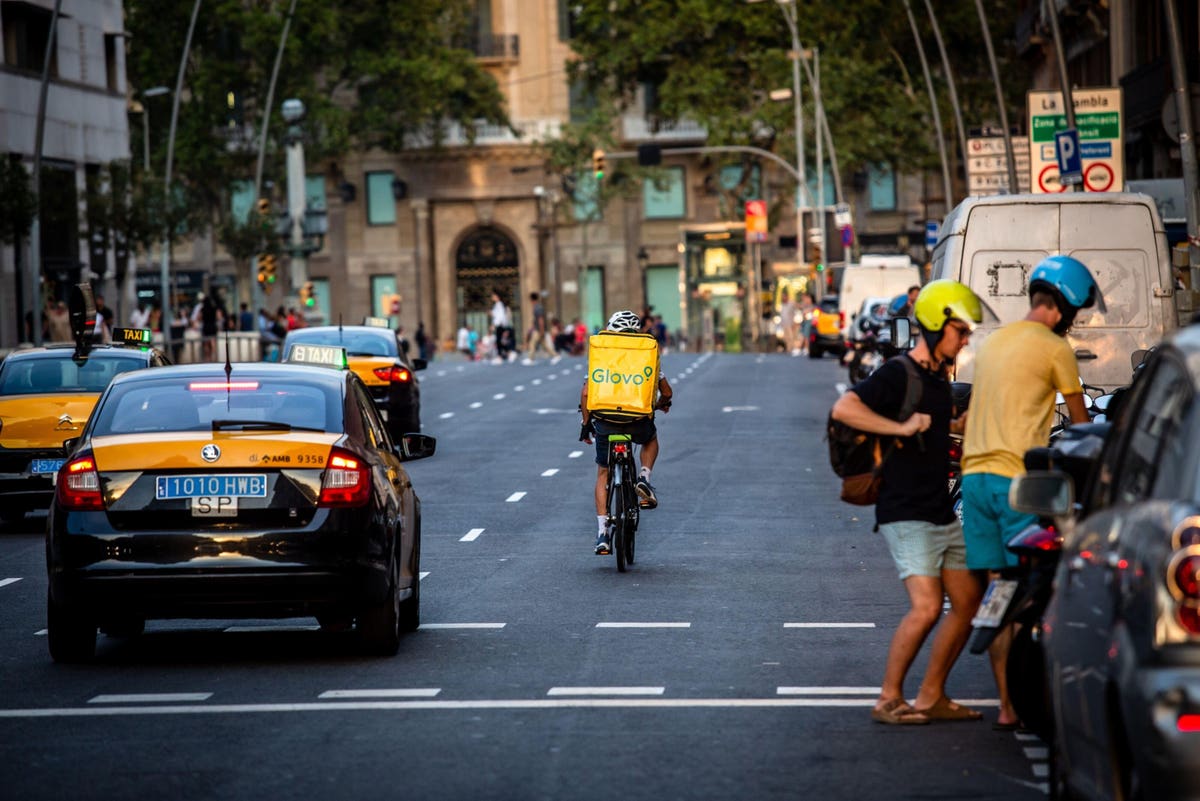In the past six months, the valuations of quick commerce apps like Getir or Gorillas have plunged, following speedy competitor acquisitions, layoffs and market exits. With unprofitable business models centered mostly around 30-minute or less grocery deliveries – a low-margin and costly operating model – these startups might not prosper, at least not in the European market. The exception seems to be Glovo, the Spanish-based last-mile delivery startup showcasing a more diversified business model, which is leading the company to believe in near-term profitability in a sector where reaching this milestone is likely unattainable. So, what is it about Glovo’s strategy that differentiates it from competition?
A multi-category approach to quick commerce
While food and grocery retail represent Glovo’s main types of delivery, the startup positions itself as a platform to connect customers and local businesses and provide hyper-convenience to shoppers, regardless of the type of products being delivered. “The way to grow has been by expanding beyond grocery. Once we had the user base, we could deliver anything, with the only limit depending on a city’s retailers and offerings,” says Daniel Alonso Moreno, Glovo’s VP of Q-commerce. This diversification allows the startup to capture more consumer needs and occasions while growing the app’s traffic and usage; it is also an efficient way to mitigate one of quick commerce’s many pain points: acquisition costs.
In addition to being able to generate attractive revenue from product categories of higher value compared to grocery (given that Glovo takes a percentage of the basket value), its diversification approach makes sense, because expanding into new categories isn’t as costly.“ The cost of acquisition is much smaller because we are talking about migrating users from a food delivery app to grocery and overall retail. Customers have already downloaded the app and are using it, we are just offering more services on it which means there are less barriers to adoption,” shares Moreno, highlighting that Glovo really does deliver anything that can be delivered through its focus on hyper-convenience. The company also offers scheduled deliveries, a notable distinction versus certain competitors as it is much more viable from an operating perspective and implies that all types of customer needs can be addressed, urgent or not.
For those doubting the actual need for such hyper-convenience, the numbers seem to go in favor of the startup: according to the company, demand persisted post-covid, with 3 times more transactional volume and +62% growth YoY. And while fulfilling emergency shopping occasions still isn’t profitable for Glovo, partnerships with leading retailers is. So that is naturally what the company is focused on.
A diversity of revenue streams
Back in 2019, Glovo signed its first global partnership with leading grocery retailer Carrefour. This enabled the company to grow within the e-grocery space and scale effectively while allowing the retailer to advance its e-commerce capabilities. Through this model, shoppers can view the assortment of their local grocery store and order via Glovo to receive their items within minutes. Glovo couriers pick up orders from a designated local grocery store, helping retailers solve part of their complex last-mile delivery challenges. Four years later, partnering with large grocers remains a top priority for the startup; in fact, it is the key metric for Moreno who aims to sign additional leading Spanish retailers in the near future to grow scalability.
In addition, the company just launched Glovo Ads, aimed at helping retailers on the app grow visibility, expand their audience and increase their sales through the quick commerce channel. The platform will offer tools available for purchase such as in-app banners, sponsored searches and branded sections amongst others. “Integrating advertising solutions into a single vertical is a new step in our firm commitment to becoming the leading digital partner for all brands, restaurants, and stores that place their trust in us. Through Glovo Ads, we provide a diverse range of tools to support these businesses in their growth and bring them closer to their customers,” shared Rodrigo Alier, Global Director of Glovo Ads in a press release. Ultimately, the launch of these new tools represents an additional revenue stream for the company that has evident interest in helping its partners grow revenue through the app.
Overall, Glovo is in a better position versus its competitors thanks to its early diversification strategy and B2B delivery services. Becoming the delivery partner of grocery retailers seem to be the main objective for the company, hoping it will help reach profitability targets in the near future. The company has already improved profitability by €250 million YoY, but will signing more grocery partners be enough to reach financial wellbeing? Ultimately, the most attractive path to profitable growth for players such as Glovo resides in diversification, from a category and logistics lens. Offering a wide assortment of product categories and delivery timings such as same and next-day delivery makes much more economic sense and might be the path to reinvention of quick commerce in the long-run.
Read the full article here





